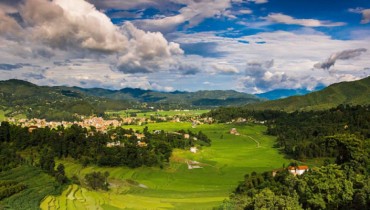Holi: A Festival for Symbolizing Positive Vibe in People

Holi, the festival of colors, is one of the most popular and vibrant festivals celebrated in Nepal, India and around the world. It marks the arrival of spring and the triumph of good over evil. The festival is not only a celebration of colors but also a symbol of love, unity, and togetherness. Let's dive deeper into the history, traditions, and celebrations of this colorful festival.
History of Holi Festival: The origin of Holi can be traced back to ancient Hindu mythology, where it is believed to be a celebration of the victory of good over evil. One of the most popular legends associated with Holi is the story of Prahlada, a young prince who was a devotee of Lord Vishnu. Despite the disapproval of his father, who was a demon king, Prahlada continued to worship Lord Vishnu. The enraged king tried to kill his son but failed every time, and in the end, was killed by Lord Vishnu in the form of Narasimha, a half-lion, and half-man deity. The triumph of Prahlada over his evil father symbolizes the victory of good over evil, which is the underlying theme of the festival.
Traditions of Holi Festival: Holi is a two-day festival that begins on the full moon day of the Hindu month of Phalguna, usually falling in late February or early March. On the first day, known as Holika Dahan or Chhoti Holi, people light bonfires to symbolize the burning of the demon Holika, who was killed by Lord Vishnu. On the second day, known as Rangwali Holi, people throw colored powders and water at each other, dance, and sing to celebrate the arrival of spring. The festival also involves playing with water guns and water balloons, smearing colors on friends and family, and indulging in traditional foods and sweets.
Celebrations of Holi Festival: The celebrations of Holi vary across different regions of India, but the spirit of the festival remains the same – to spread love, unity, and happiness. In Mathura and Vrindavan, the birthplace of Lord Krishna, Holi is celebrated with great fervor, and people reenact the famous Raas Lila dance. In Gujarat, people celebrate Holi with the traditional dance form of Garba, while in Punjab, people gather to perform Bhangra dance. In some parts of India, the festival is celebrated with the throwing of tomatoes, turmeric, and flowers, while in some regions, it is a time for feasting and exchanging gifts with loved ones.
Conclusion: Holi is not just a festival of colors but a celebration of love, unity, and togetherness. It is a time when people forget their differences and come together to celebrate the arrival of spring. Holi is a festival that promotes diversity and inclusivity, and it is a reminder that no matter what our differences are, we can all come together and celebrate our shared humanity. As we celebrate Holi this year, let us remember the message of love and unity that the festival brings and spread joy and happiness to those around us
Quick Inquiry

Everest Base Camp Trek- An Adventurous and Joyous Trekking ever

6 Best Guide Books About Trekking in Nepal


